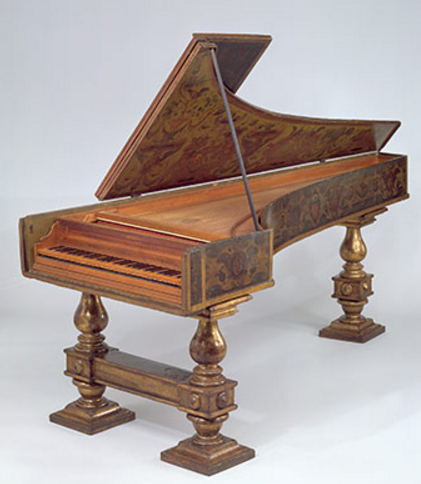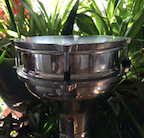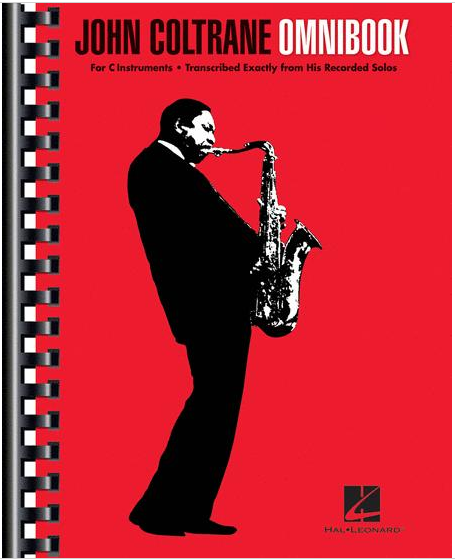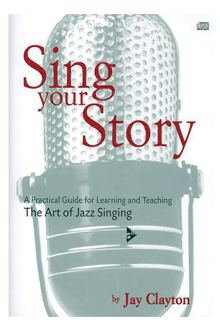“There’s something beautiful about having an entire audience hanging on a single note.” |
wiki ~ Andre Watts |
Piano in a nutshell. The piano and all of it's various electric keyboards we have today could very well be the most modern instrument we have today. For it not only covers everything in music; rhythm, dynamics, emotions, solo, lead the band, back the singers, back the dancers, compose but it also today a 'synthesizer', capable of sounding like just about anything we might imagine. And it'll do near all of these things for anyone that is interested enough to 'tickle the ivories', no skill required, it's all right there ... imagine that ! On the flip side, the piano affords all of the above musical magics to a profound degree of developed mastery over a career with music. Each of our AmerAfroLatinEuro Americana styles has practioners to illuminate the piano's magics. And by exploring through listening to piano masters, we begin to shape and chart our own artistic destiny. |
|
500 years or so ... The history of the folks and their work that went into creating the modern day piano we enjoy today is a story of multi-generational perseverance on so many levels. Developed in Europe over scores of generations of artisans and their guilds, the instrument we enjoy today, the 'piano ~ forte', has overcome three central elements that bring its pitches to our fingertips. First is it's physical key stroke / mechanism which brings its touch sensitivity of tone and volume, which creates a range of expression from its 'piano' soft for expressing intimate whispers of music to its 'forte' loud 'piano' for those thunderous rolls of notes and chords. Second is the piano's way of tuning 88 different pitched notes so as to be enable to express our full modern range of melodic and harmonic palette of colors, projected equally from each of the 12 pitches of the chromatic scale. The same tuning that enables all of today's MIDI magics of keyboards, wind and stringed instruments. And third ? Turns out that a piano's sustain pedal combines two essential expressive elements; it allows notes to sustain in length for phrasing melody notes to perfection and also has the beyond SUPER function to completely translate our rhythms; the start / stop timing of any of the piano's sounds, with the rhythmic press of a pedal which enables the instrument to capture and parlay the with confidence the rhythms of every culture's rhythms for dance. Took about 1000 years to get us here but still ... kinda beyond remarkable huh ? We started to get electricity about 9/10th's of the way through, and in this last tenth the piano family has added the electronic keyboard, which has revolutionized our musics once again just as the piano did way back when. Cool ... ? |
|
"The piano keys are black and white but they sound like a million colors in your mind." |
wiki ~ Maria Christina Mena |
The two / three pattern of the black keys. The piano's keys layout our 12 notes by a combination of black and white keys. The first pattern we can notice is the clear 'two / three' pattern of the black keys tucked into the white keys, here shown reflected to enhance. Ex. 1. |
 |
The looping of the keys. This pattern is then looped, repeated seven times to give us the full range of a modern keyboard. Example 2. |
 |
The white key center. The pitches of the relative key pairing of 'C' major and 'A' minor are built right into the white keys. Example 3. |
 |
The black key centers. And since there are five black keys, these five notes grouped become the 'Gb' major / 'Eb' minor pentatonic scales. Example 4. major 'Gb Ab Bb Db Eb Gb' minor 'Eb Gb Ab Bb Db Eb' |
 |
All the 12 different pitches / keys. And now adding in the pitches of the black keys, we get all 12 pitches of the chromatic scale. Example 5. |
 |
The blue note keys. In relation to the white keys of the 'C and A' relative key center, the black keys provide the blue notes; 'Db, Eb, Gb, Ab, Bb.' Example 5. |
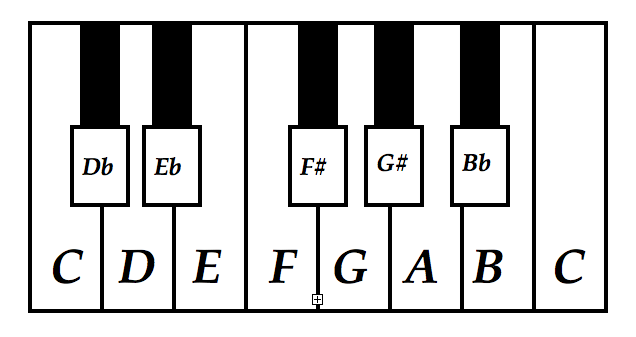 |
Quick review. And that's that ... set in stone :) And the notes and keys and their layout have been this way all along now, which might be nearing 1000 years or so now, a millennium of magic. Rote them up here if needed and join into the piano's magical history. |
|
Triads are built right in too. Each of the seven diatonic triads for 'C' major / 'A' minor are built right into the white keys too. Thinking 'C' major, find these groups of three notes. Play them in order a few times to orient them under the fingers, then jazz em' up as your Muse suggests. If available, use the sustain pedal to help smooth out the move from chord to chord. Example 6. C E G / D F A / E G B / F A C G B D / A C E / B D F / C E G |
 |
Create a sequence. From 'middle C', create the following sequence using three notes at a time, from the 'C' major scale. Example 7. C D E / D E F / E F G / F G A G A B / A B C / B C D / C D E ... |
 |
Improvise a melody from ... With the notes of a 'C' major scale, jazz up the rhythms and create a melody from the notes of the 'C' major scale, 'A' minor too. Example 8. descending melody ~ C B A G F E D C A G F E D C B A |
 |
A blues piano solo. Twelve bar blues in 'Bb.' An amazing ten choruses improvised by Tom Bargelski, Alaska's wizard of the keys. Listen through and marvel, finding the 'top' of each new chorus along the way. |
Get's right to it huh ? Hearing and finding the top ok ? There's 10 of them so ... count along if necessary. Find the downbeat and begin counting measures;
|
Gospel chord voicings. That the gospel styled harmonies on piano can work with every style somehow with our Americana musics, here's a beginning point for getting started. Based in 'C' major, find these voicings on your piano and work them into the music you're playing, adjusting things along the way as necessary. |
Jamming with a piano. Crazy but true, that with most pianos having a sustain pedal, developing the ability to strike a chord and sustain it with the pedal, then run a melodic idea of the sonority of the chord, can by leaps and bounds improve all of what we can do musically. Once you find a piano, and have your instrument handy give it a try, it'll work for any instrument. Horn players love to do this as their instruments don't really play chords like a piano or guitar can. Single line instrument rely on the arpeggio figure of the pitches to capture the art and music essence of harmony, chord progressions, color tones et all. |
Horn players. For single line players, which of course include all the horns, woodwinds, flutes and beyond, the materials in this e-book are an extravaganza cornucopia bag of licks, tricks and the 'how' to generate melodies through the wide range of musics we find in the Americana songbook. Single line instruments lean melody, while sounding out the pitches of arpeggios creates a sense of harmony, the stacked pitches sounded together into chords we use to support our melodies. Historically in the evolution of our Americana musics, and especially in jazz, which was America's 'pop' music up until 1950 or so, we have 'arpeggio kings', melody / horn players who come along during history that reinvent the jazz language with new opportunities for creative improvisational expression firmly based on advancing the harmonies of songs; through chord progressions, color tones and tempos. And from this improv new melodies and songs are often created. |
Classical conversions for horns. Thanks to our Americana pride in public school education for all, there's an opportunity to learn to play a wind instrument from early on. Singing then kazoo's, then recorders and flutes, then the various clarinets and saxophones, the 'reed' woodwinds and brass of trumpets, trombones and horns, all the instruments for band and orchestra, opportunity for learning abounds. In this e-book, those artists so trained are our 'classical conversions', simply to add performance 'by ear' to their existing reading music skills. Nine tenth's of this learning is pairing the aural recognition of what we already know with a vocabulary word to tie it into the playing music 'by ear' and improvisation conversations. Once there, this entire music study, which ranges in it's theories from Bach to Coltrane, will blossom by understanding how the same nut and bolts elements identifie by academia vocabulary are sequenced and motored together to create our own Americana weave and styles and genres. Treble clef. That both the general music theory examples and all of the examples for guitar are written in treble clef will provide horn players with a ton of ideas to read through in every discussion. There's some bass clef too. All the notation examples have midi playback, just click the music, and play along. And the theory words used to describe the music in each example then become hyperlinks to continue each conversation forward, often into multiple directions. Cool ... ? |
Leaning towards pop music. Horn players leaning towards developing their skills in the pop music stylings will generally have a super clear 'theory road' ahead. For near everything that 'pops' is diatonic, with a bit of the blues' hue. That said, up and coming cats should know the diatonic realm and its 'three and three' super solid, through all 12 keys. No telling where a pop singer is going to want their pitches for a certain melody, best to be prepared; theory wize it's about the 'movable one.' |
And unless reading in a section, chances are good that in radio play songs of 2:45 or so in length, horn parts / notes in pop songs are special accents, maybe a couple of bars of perfection, one line of a couple of pitches, a blue note added to a long note. Just be ready :) A top exception ? Why, none other than Billy Joel's essential 1977 pop classic "Just The Way You Are", where the alto sax gets plenty of room to tell the story. Melody artist / multisaxophonist Kenny G' surely shows us the ways and means for finding success in pop music. |
|
Leaning blues and rock. Horn players in the blues and rock musics mostly lean to blues line over whatever changes. Horn lines are often just like blues and rock guitar and vocal lines; just a couple of pitches with a ton of each artist's own mojo layed on thick. When the time comes to testify during performance, cats talk about 'bringing it', as mailing it in just not an option. Learn by ear. Since there's just so much varied emotional inflection in this style of horn playing it's way easier to learn by ear as trying to notate the nuance would be endless, so way less fun too. You finding these expressions on your horn is the whole challenge with learning rock and blues horn. Listening to your fave players is the way its been done ever since the first radio days. And that process still works fine today. Knowing that cool blues / rock ideas can come from any instrument; voice, horns, guitar, keys etc., gives us about 75 years of literature to explore and all of it will sound fine on any horn chosen. A lot of horn cats will double on harmonica, its smaller so way easier to get around to sit in, get a foot in the door, then come back with the real deal. Once you create an audio rig with start and stop controls to play songs, plus are able to go back in the recording to repeat a lick with playback controls, the rest is just a wanting to find the notes and all their varied abilities as the move through blues and rock chord changes and progressions. Sing and play wins the day. Then its just a plain daily bowl gumption, perseverence and a love of the art to get better and better. In this 'lifting' of the art, to be disciplined is a very very good thing :) |
|
Leaning blues and jazz. In our histories, early blues and jazz were almost the same musics. By the Tin Pan Alley days, with its Euro harmony influence, jazz songs retained the blues but moved from the 12 bar blues song form to the 32 bar form that we can associate with the sonata allegro from the classical music literature. Explore the links to further these discussions. |
|
Single line. 'Single line' is a slang term for a melodic idea as a series of pitches. Near all of the musical examples in this e-book contains written out, single note melodies, all of which are playable on a horn by ear or that reads treble clef. There's discussions and practice examples for intervals, triads, scales and arpeggios, essential cliche blues lines, V7b9 chord substitution concepts and lines, sequence and permutation studies for single note lines, improvising (composing) lines both 'over and through' chord changes, the Hawkin's "Body and Soul" arpeggio study, Bach and Coltrane melodic lines, plus discussions of how music moves through time, how we measure and notate it, its '2 and 4 pull' of swing, and to think ahead in time and form through modern forward motion principles. Jazz leaning cats are encouraged to locate transcription books such as these two shown below, transcriptions of arpeggio kings Parker and Coltrane. Listening to your faves and lifting is the old school way, which gives us a chance to 'jamm' with the best in the business and help strengthen our own concepts. For a sure way to become a better musician ourselves is to play with better musicians when the opportunity arises. |
Vocalists. Simply work through the following suggestions and sing all of the pitches you can. Find someone to listen along to check how your singing notes tune up with your piano's pitches. Blues and jazz leaning singers can easily hone their craft simply by adding to piano studies the singing along with the singers they most admire. For finding blue notes with the voice might be best learned by ear. As we can each let our own built in 'by ear' shape our blue notes. And surely 'singing with the recorded songs you love' is everything one might ever need to succeed. And then there's this magical book by a magical artist ... :)
|
Composers. Throughout history, composers have loved all of the various 'incarnates' of the piano over the centuries, and many of its most famous players have filled concert halls all over the world, the whole palette at their fingertips. In today's MIDI universe, a synth piano becomes an orchestrator of unlimited potential of sounds and colors with new innovations today that take us into tunings beyond our 12 pitches. So in our learning and understanding our music, having a few of the piano's basics under our fingers can help us in many positive ways; clear pitches to hear and sing, all manner of arpeggios and chords, and a linear 'layout' of the pitches that some learners can quickly grasp to shape their perspective. |
Review. Keep playing, find a teacher and keep exploring ! ~ voice leading and voicings ~ ~ method book / Charles - Louis Hanon ~
|
"A problem is a chance for you to do your best." |
wiki ~ Duke Ellington |
References. References for this page's information comes from school, books and the bandstand and made way easier by the folks along the way. |
Find a mentor / e-book / academia Alaska. Always good to have a mentor when learning about things new to us. And with music and its magics, nice to have a friend or two ask questions and collaborate with. Seek and ye shall find. Local high schools, libraries, friends and family, musicians in your home town ... just ask around, someone will know someone who knows someone about music and can help you with your studies in the musical arts. |
|
Always keep in mind that all along life's journey there will be folks to help us and also folks we can help ... for we are not in this endeavor alone :) The now ancient natural truth is that we each are responsible for our own education. Positive answer this always 'to live by' question; 'who is responsible for your education ... ? |
Intensive tutoring. Luckily for musical artists like us, the learning dip of the 'covid years' can vanish quickly with intensive tutoring. For all disciplines; including all the sciences and the 'hands on' trade schools, that with tutoring, learning blossoms to 'catch us up.' In music ? The 'theory' of making musical art is built with just the 12 unique pitches, so easy to master with mentorship. And in 'practice ?' Luckily old school, the foundation that 'all responsibility for self betterment is ours alone.' Which in music, and same for all the arts, means to do what we really love to do ... to make music :) |
 |
"These books, and your capacity to understand them, are just the same in all places. Always bear in mind that your own resolution to succeed, is more important than any other one thing." |
|
Academia references of Alaska. And when you need university level answers to your questions and musings, and especially if you are considering a career in music and looking to continue your formal studies, begin to e-reach out to the Alaska University Music Campus communities and begin a dialogue with some of Alaska's finest resident maestros ! |
~ |
